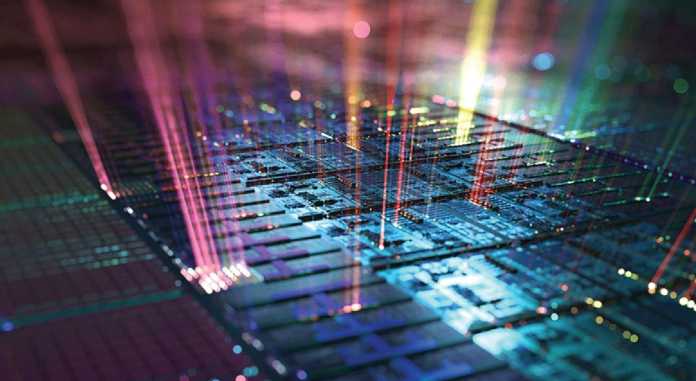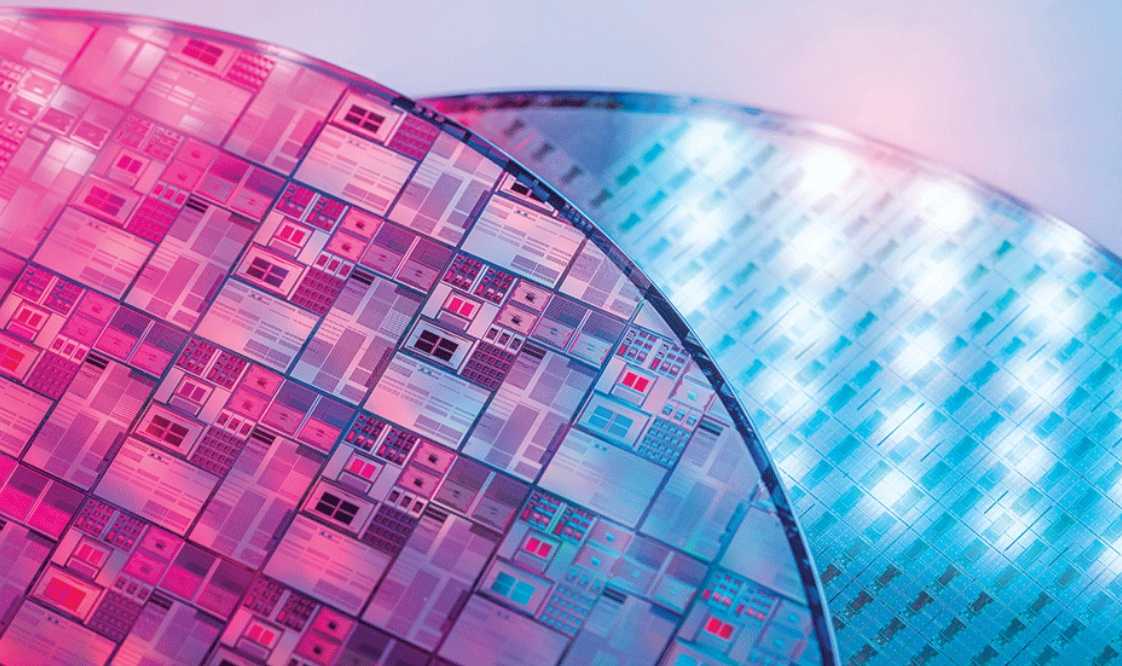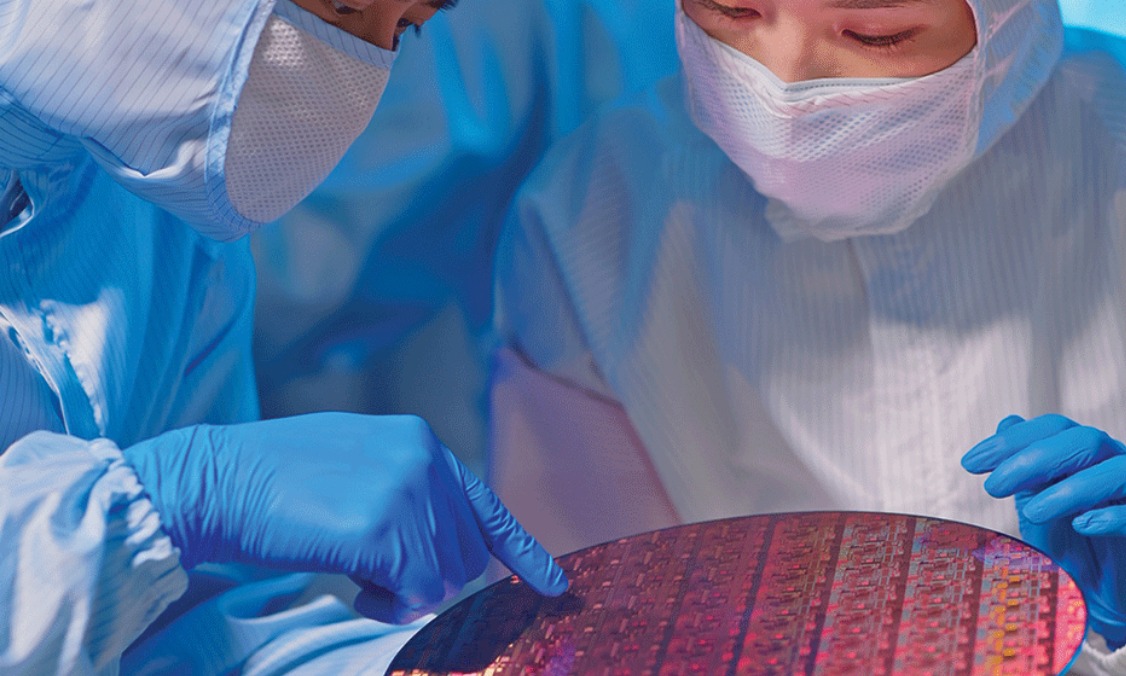Until recently, Taiwan’s central position in the global supply chain of advanced semiconductors was not seen as an issue. But today, in an uncertain geopolitical climate, governments around the world have good reason to reexamine the security of supply of these increasingly crucial components.
Economic prosperity and global power in the twentieth century were defined by oil. Today, economic growth and our very way of life are defined by silicon. Semiconductors that are thinner than a strand of human hair power everything from our electric toothbrush to our smartphones to the most sophisticated fighter jets.
The global semiconductor market was valued at US$573.44 billion in 2022 and is projected to exceed over 1 trillion dollars by 2030. To put this into perspective, in 2021 China spent US$432 billion on imported microprocessors, the equivalent of its total expenditure on grain and crude oil imports.
Given the crucial role of semiconductors, often referred to as chips, in the modern-day economic system, it is surprising that it has taken increased tensions with China and the supply chain disruptions caused by COVID-19 for heads of state to view seriously the vulnerabilities in these global supply chains.
Supplying chips
The quirk of history that located the most advanced semiconductor manufacturing in Taiwan was a product of the far-sightedness of the government, which invested billions in the sector, the decision of Western policymakers to leave the location of manufacturing facilities to market forces and, within the EU, the system of regulation and taxation, which has created an environment inhospitable to the emergence of domestic tech champions.
The Taiwan Semiconductor Manufacturing Company (TSMC), which manufactures the most advanced chips, stands at the apex of a complex global supply chain, comprising thousands of specialised companies across the world. The Semiconductor Industry Association estimates that, prior to the pandemic, one of its members had more than 16,000 suppliers, of which more than 8,500 were outside the US. The raw materials and the components of a chip, criss-cross the world before eventually ending up as the brains of a device.
The quest for cost savings meant that this global complexity was acceptable for much of the past 30 years. Now, the vulnerabilities of global supply chains, revealed by COVID-19 and the geopolitical tensions between the US and China, are putting pressure on chip manufacturers to onshore or friend-shore part of the manufacturing process.
Given the complexity of the sector, from the raw materials to the human talent and the vast investment required to fabricate chips, the industry may be confronting its greatest challenge.
What’s in a chip?
Chips are made from silicon. Each chip has hundreds of tiny layers, made up of transistors and electrical circuits, which determine what the chip can do. The miniscule circuitry is printed on each layer using lithography, extremely precise rays of light. The smaller the width of the transistor gate – 5nm, 3nm – the more processing power can fit in a given space, with less power needed. The smallest transistors are more than 10,000 times thinner than a human hair.
Different-sized chips are used in different equipment. Intel manufactures a lot of 10nm and 14nm chips that are used in computer CPUs and GPUs. Less-advanced 28-40nm chips are primarily used in the automotive industry and in household devices such as coffee makers and electric toothbrushes. Chips of 5mn are sought after for advanced data processing and AI. They are used in the latest smartphones, NASA Rovers, and F35 fighter jets.
The insatiable appetite for chips
A record 1.5 trillion semiconductors were shipped in 2021 and demand is expected to double by 2030. The rising consumption of consumer electronic devices fuels the market, as does demand from the industrial and military sectors. New technologies such as the Internet of Things, artificial intelligence, and machine learning create new opportunities for market development and enable chips to process large amounts of data in less time.
The challenge with chips
Access to semiconductors is an integral part of national security and governments across the political spectrum are seeking to develop domestic manufacturing capability. To be successful, this will require the adoption of government-directed industrial policy on an unprecedented scale.
Costs
Chip fabrication requires massive fixed-asset investment and, therefore, large subsidies, but with no guarantee of success. In August 2022, the Biden administration announced US$52 billion in subsidies for chip manufacturing and research in a piece of legislation that became known as the “Chips Act”. This was a significant step forward for US domestic manufacturing but, to put in perspective the sums required to compete in the semiconductor space, this investment was dwarfed in March 2023, when South Korea announced it would build the biggest chip centre in the world, using US$230 billion of private investment from electronics giant Samsung over the next 20 years.
Each fab easily costs US$15 billion to build, and the essential piece of equipment to yield the most advanced chips costs upwards of US$180 million. Creating 5 nm chips and below requires the use of an extreme ultraviolet lithography machine. It uses small rays of light to etch the miniscule circuitry onto the chips. Only one company, ASML, based in the Netherlands, makes this EUV machine, the price of each one being over US$180 million. Buying these machines means that production costs will soar, but if you can’t implement the process without the machine, you have no choice but to buy it. There is fierce competition to be the company that buys the next machine to be manufactured among the three main players in the market, TSMC, Intel, and Samsung, who can afford the hefty price tag.
Building plants
Once the funding for fabs is made available, building time is three years and the project requires 6,000 construction workers to complete. Each fab is a manufacturing marvel. It is at least 250 thousand square feet, and houses 9 million metres of cabling, 1,200 multimillion-dollar tools, and 1,500 pieces of utility equipment.
Talent
Once the fab is constructed, multiple layers of talent are required for each step of the design and manufacturing process. A large, fab-less semiconductor company may well need 100 doctorate-level designers at the design stage. A sizeable fab needs about 4,000 workers with skills in production engineering, logistics and support, and production operations, plus thousands of lower-skilled workers. As technology evolves, with greater analytics and automation, the talent and skills required will also evolve and employment requirements will change.
To expand domestic manufacturing, the US and the EU will need to rethink their educational priorities and incentives for talented individuals to work in the sector. In 2021, the global semiconductor industry had about 2 million direct employees worldwide. The number is projected to increase to 3 million by 2030 if current forecasts for increased production are to be met.
The EU and, more notably, the US have an asymmetric advantage in attracting talented individuals, given their high living standards and opportunities for personal-wealth creation. Current immigration requirements are undermining the allure of the regions as employment destinations. As a consequence, the unanswered question remains: where the talent will come from.
Raw materials
Once the talent is in place, the 17 rare earth elements, which cluster near the bottom of the periodic table, become vital to the manufacture of semiconductors. While the US government lists these minerals among those deemed critical to the country’s economic and national security, the term “rare earth” is misleading. These metals are relatively abundant in the Earth’s crust, but extraction is complicated because such elements are jumbled together with many other minerals in different concentrations.
China currently controls the majority of the world’s separation facilities that produce the purified metals. In the event of increased geopolitical tensions or supply chain disruptions caused by other factors, the US and EU could quickly face shortages of these metals.
Investment in domestic mining infrastructure and securing supplies in other regions of the world is crucial if the US and EU are to enhance their security of supply, particularly as demand for these metals increases. While this is achievable, the costs involved are significant and, for the EU, sustainability and environmental considerations may act as an impediment.
Newer materials that are used in the production of chips that are capable of handling high voltages and currents, as required for electric vehicles, solar panels, and wind turbines, are a field where the US and EU can be relatively self-sufficient. Gallium nitride (GaN) and silicon carbide (SiC) can run at thousands of volts (in contrast to silicon, which can’t handle extreme heat) and are quickly becoming multibillion-dollar markets.
Chips are the new geopolitical battlefield
Technology will define the future of geopolitics. Advanced semiconductors will define the future of military capability. The price of a fab is the same as a new aircraft carrier, with the fab now being of greater importance to national security.
The silicon shield that protects Taiwan was, until recently, considered by many to be impervious. It gave the world a reason to defend the island from invasion and, perhaps, created a reason not to invade. New geopolitical realities are challenging this assumption and Taiwan is a major vulnerability to all importers of advanced semiconductors.
The worldwide semiconductor industry is expected to double its capacity by 2030. The question is where this capacity will be built and whether the US and EU will demonstrate the political will necessary to revolutionise domestic production. It is non-negotiable if the regions are to remain economically, politically, and militarily competitive and if their domestic manufacturers are to have access to an abundant supply of chips.
This article was originally published in The European Business Review on 27 June 2023. It can be accessed here: https://worldfinancialreview.com/leaving-our-planet-better-than-we-found-it-the-role-of-finance/
About the Author
D r. Elizabeth Stephens is an investment and country risk advisor and managing director of Geopolitical Risk Advisory, a tech company that uses AI and data analytics to map geopolitical instability. She is a regular conference speaker and visiting lecturer at London and Henley Business Schools.
r. Elizabeth Stephens is an investment and country risk advisor and managing director of Geopolitical Risk Advisory, a tech company that uses AI and data analytics to map geopolitical instability. She is a regular conference speaker and visiting lecturer at London and Henley Business Schools.












